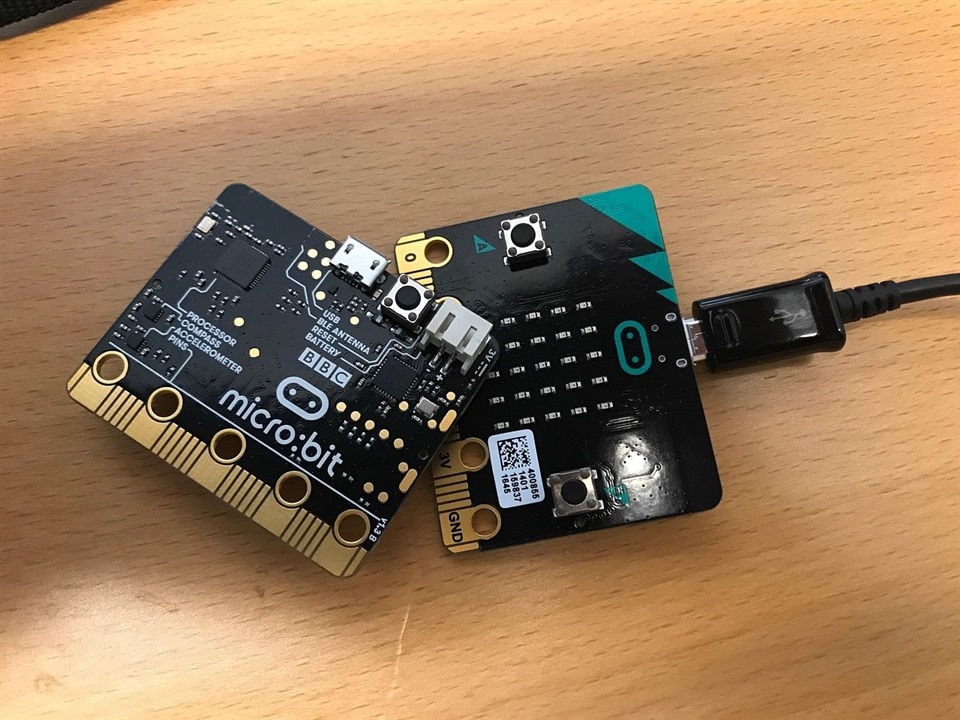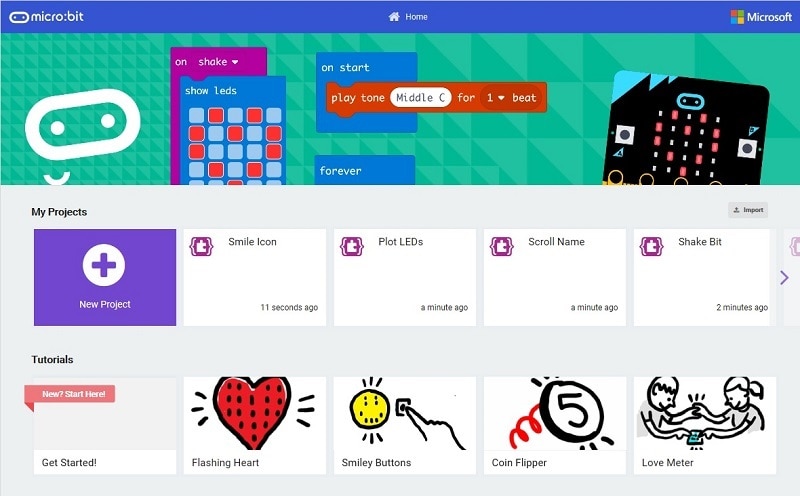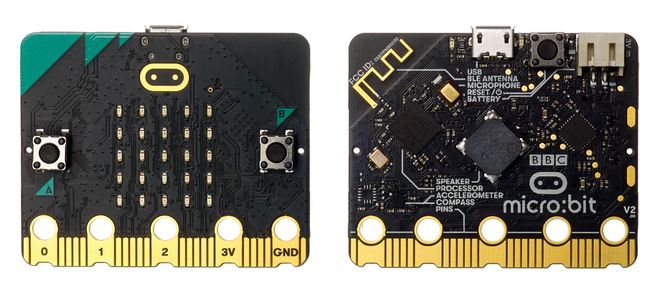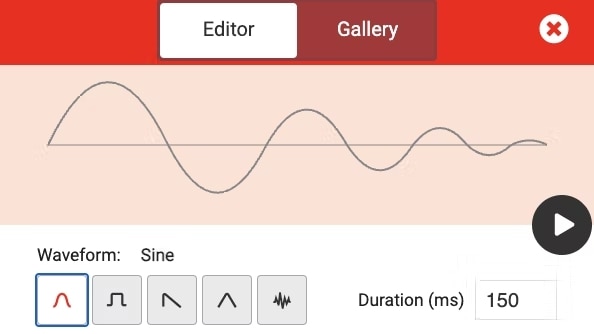
The micro:bit is a tiny computational device for makers and electronics enthusiasts. (Image Credit: JohnnyAndren/pixabay)
In October 2013, BBC Director General Tony Hall announced an initiative to make coding more accessible for UK-based businesses, schools, and homes. The main idea at the time was to inspire programming, coding, and digital technology creativity within the next generation of digital pioneers. It served as a predecessor to the “Make it Digital” campaign, a project that launched on March 12, 2015. The BBC collaborated with 50 organizations, creating 5,000 digital trainees. The plan involved delivering one million devices to Year 7 pupils across the UK.
The BBC also announced the micro:bit, a tiny computational device with sensors and processors, as part of the Make it Digital campaign, designed to address the skills shortage in the UK requiring 1.4 million digital professionals. It formed partnerships with 29 organizations to design, manufacture, and distribute the device. On July 6, 2015, BBC revealed the final design and specifications of the micro:bit.

Micro:bit V1 has plenty of features for various projects. (Image Credit: The Micro:Bit Educational Foundation)
Measuring 43 mm x 52 mm, the physical board features:
- 5x5 LED matrix---25 individual programmable LEDs
- Nordic nRF51822 Arm Cortex-M0 32-bit processor (16 MHz)
- NXP/Freescale KL26Z---48 MHz ARM Cortex-M0+ core microcontroller
- NXP/Freescale MMA88652 3-axis accelerometer (PC bus)
- NXP/Freescale MAG3110 3-axis magnetometer (PC bus)
- nRF51 on-core temperature sensor with a range between -25C to 75C
- Two programmable buttons (A and B). One reset button.
- Bluetooth 4.1 with Bluetooth Low Energy (BLE)---2.4 GHz ISM band with 50 2MHz channels (40 used), -93dBm sensitivity
- micro USB connector
- 25-pin edge connector with PWM, GPIO, analog inputs, serial I/O, SPI, and I2C capabilities.
Micro:bit supports various programming languages, including MicroPython and Scratch, making the device accessible for those with different skills and preferences.
Although BBC initially intended to deliver micro:bit devices to schools in September 2015 and the general public in October 2015, manufacturing delays and redesigns prevented on-time distribution. In that case, BBC discovered a power supply issue during the final testing stages, leading to more hardware fine-tuning. People using the micro:bit device felt an electrical shock from the batteries, and that had to be addressed to meet safety standards before mass distribution. Additionally, other devices had reverse polarity in their connectors, which may cause malfunction or damage. So, the BBC ensured all the black and red wires didn’t misalign with the positive and negative terminals, leading to further refinements.
According to the BBC, the micro:bit is “very complex” and “very sophisticated,” making the development process even more challenging. It also didn’t help that the school sign-up process had some communication issues, which contributed to the pushback.
Because of these delays, teachers expected to receive their micro:bits before Christmas 2015, while students received them in early 2016. The BBC’s goal involved delivering as many devices as possible to Year 7 students by the end of the school term. Delivery of the micro:bit devices didn’t start until February 10th, 2016---after manufacturing, testing, and certification. By March 2016, Year 7 students in England and Wales, Year 8 students in Northern Ireland, and S1 in Scotland got their micro:bit---totaling 800,000 devices. All the students and teachers who received the micro:bit felt highly engaged in the product. Within six months, the website had 13 million visits. Meanwhile, two million programs were downloaded to the device, and the online simulator saw 10 million runs.
After successful delivery, the Microbit Educational Foundation was established, taking over duties from the BBC. The nonprofit organization oversees product development and global outreach. It also worked with technologists, educators, and governments to inspire digital learning and encourage global change. Through partnerships and educational programs, the foundation aims to make digital skills accessible and impactful globally. The micro:bit Educational Foundation helped introduce the micro:bit into the school curriculum in North America, Europe, and Asia. Other countries like Canada, Japan, and Singapore incorporated micro:bit into their STEM education.
In late 2016, micro:bit became available for purchase in the UK and overseas, serving as the Micro:bit Educational Foundation’s strategy to make the device more available on a global scale. The foundation formed partnerships with global manufacturers and distributors like Farnell and RS Group, allowing the device to reach over 60 countries. By 2017, the foundation said it would give North America and China the devices as part of the global outreach strategy. That aligned with hardware improvements supporting Chinese and Japanese characters, additional LEDs, and more computational power. It wasn’t until June 2020 that China could purchase the micro:bit through element14. Japan could purchase the device in August 2017.
In 2018, the Micro:bit Educational Foundation formed partnerships with ARM, Microsoft, and Nominet, helping drive initiatives. While ARM made contributions to the device’s hardware, Microsoft enabled software development support via MakeCode. Lastly, Nominet provided funds and resources to expand educational initiatives. It also formed partnerships with the British Council to incorporate large-scale initiatives, including the “21st Century Schools Programme” in the Western Balkans. With this initiative, 18,000 teachers would be trained and one million students equipped with micro:bits. Chicaco-based inner-city schools used the micro:bit in projects supported by MIT to improve digital literacy.

Microsoft’s micro:bit editor update with a new block based on UI Scratch blocks. (Image Credit: Microsoft)
Microsoft’s MakeCode team released a new micro:bit editor update featuring incremental improvements and a new block UI based on Scratch Blocks. This helped improve the user experience without affecting project developments. Microsoft and SiriVentures launched the “Smart Living with micro:bit” initiative, which teaches digital skills and creativity to children. Micro:bit partner elecfreaks demonstrated its micro:bit products at the BETT SHOW 2018, showcasing the device’s use in education.
In September 2019, the Micro:bit Educational Foundation partnered with Project Everyone’s World’s Largest Lesson and ARM to launch the “Do your bit” challenge. This global competition challenges young students (aged 8-18) to develop technology addressing the UN’s Global Goals. Some example projects created at the event include a health monitor for schoolchildren in Nigeria, a wearable posture-correction device in Croatia, a food waste tracking device in Singapore, and a river-cleaning buoy in Brazil.
Microsoft’s MakeCode released a new update for the micro:bit. The update implemented new features, including improved radio communication capabilities, improved servo motor controls, and bug fixes. In addition, the update added 26 languages, improving global access.
According to surveys, 93% of students using the micro:bit say they learned something new, and 88% found it fun and exciting. 87% say they learned more about coding through the micro:bit. Meanwhile, 81% of teachers say they learned something new using the micro:bit. These results demonstrate the device’s effectiveness as a tool to teach coding and computational thinking.

The Micro:bit Educational Foundation released a new and improved V2 micro:bit device. (Image Credit: The Micro:Bit Educational Foundation)
On October 13, 2020, a new version called micro:bit V2 was released with significant upgrades. For starters, the new device runs on a Nordic nRF52833 processor at 64MHz, providing four times the computing power of V1. It also features a built-in speaker and MEMS microphone (sound detection), enabling audio communication without relying on external peripherals. V2 includes a capacitive touch sensor for more interactivity, similar to what we see with a smartphone touch screen. The battery on this device even lasts longer as it includes a power-saving mode. Users activate the power-saving mode by double-clicking the reset button. Additionally, V2 received more memory (128KB of RAM) and flash storage (512KB). Version 2 could support AI and ML capabilities for future projects. The microphone also has an LED indicator that determines when the microphone is active.
In September 2021, Nominet and the micro:bit Educational Foundation launched a research program to investigate the opportunities, challenges, and impacts of using micro:bit as a teaching tool in primary UK schools. Over 2,000 primary schools across the UK received free access to the micro:bit device to support the research program.

Microsoft implemented a play sound block to the MakeCode editor. (Image Credit: The Micro:Bit Educational Foundation)
Microsoft's MakeCode editor saw a new play sound block feature added for micro:bit V2 with the built-in speaker. With this feature, students could visualize and control sounds, testing pitch, volume, and waveforms. It enables students to understand key musical concepts of frequency and volume. The visual editor makes the connection between what can be seen and heard while pitch and volume change. Additionally, students discover how changing the waveform shape alters the sound timbre.
The BBC Education, micro:bit Educational Foundation, and Nominet formed a new partnership in May 2023. This initiative provided free micro:bits to all primary schools across the UK. Donating nearly 700,000 devices funded by Nominet provides 30 free devices per school, along with free education resources and teacher training.
In November 2024, micro:bit CreateAI was launched. Students can use this free web-based tool to combine coding with MakeCode to create AI projects via machine learning and movement data. It only takes 90 minutes for students to build an AI-powered device. The process is simple. Students use the micro:bit to collect movement data, which is then fed into CreateAI to train, test, and improve their machine-learning model. Afterward, users run the model on their micro:bit device, putting it into MakeCode to develop their program that’s sent to the device and used anywhere.
By 2028, the micro:bit educational foundation hopes to deliver 100 million devices to children. According to the micro:bit website, an estimated 10.5 million devices have been distributed as of the end of January 2025. It also estimates that 59.5 million students have learned with the micro:bit device.
Although micro:bit v3 hasn't been announced, there's still a chance it may come in a few years. After all, we will likely need a new, improved version to keep up with technological advancements. It may feature AI/machine learning support, WiFi, additional sensors for monitoring, and more memory/processing power.
Additionally, the micro:bit educational foundation has encouraged educators, developers, and students to provide feedback on future hardware iterations. By doing so, newer versions address real-world educational needs.
The micro:bit has seen lots of success throughout the past decade, thanks to the community. Users can find a plethora of support from various online platforms, including the micro:bit subreddit, MakeCode forums, and the micro:bit Slack channel (join by request via the developer community website). By accessing these sites, students, enthusiasts, and educators share projects, solve problems, and collaborate with other members. There are also local coding clubs and maker groups interested parties can visit to learn, which helps to keep the micro:bit device accessible for anyone.
I'm a huge fan of the Micro:bit platform. I built a large series of projects to help people go from zero to hero on the Micro:bit.
Take a look below:
[PROJECT] BBC Micro:bit – Scary Tapping Halloween Robotics Build
[PROJECT] BBC Micro:bit – Addressable LED Light Show Sequencer by Cabe
[PROJECT] BBC Micro:bit – Covid-19 Hand Wash Timer – version 1 by Cabe
[PROJECT] BBC Micro:bit – VERSION 2 – Hand Wash Timer Circuit – by Cabe
[PROJECT] BBC Micro:bit – VERSION 3 – Sound Hand Wash Timer Circuit – by Cabe
[PROJECT] BBC Micro:bit – Fitness Tracker aka Step Counter
[PROJECT] BBC Micro:bit – Atari Punk Console by Cabe
[PROJECT] BBC Micro:bit – Make an Adventure Video Game!!!
[PROJECT] BBC Micro:bit – Metal Detector!
[PROJECT] BBC Micro:bit – Light Theremin by Cabe
[PROJECT] BBC Micro:bit – ADVANCED Light Theremin by Cabe
[PROJECT] BBC Micro:bit – Accelerometer Theremin – version 1 by Cabe
[PROJECT] BBC Micro:bit – Pure Square Wave Accelerometer Theremin – version 2 by Cabe
[PROJECT] BBC Micro:bit – 8-Button Melody Synthesizer by Cabe
[PROJECT] BBC Micro:bit – Light Show Sequencer – version 1 by Cabe
[PROJECT] BBC Micro:bit V2 – Accelerometer Theremin – PORTING of version 2 by Cabe
[PROJECT] BBC Micro:bit – Ten LED PWM controller – version 1 by Cabe
[PROJECT] BBC Micro:bit – Someone Behind You Sensor - PART 1 - Motion Detection
[PROJECT] BBC Micro:bit – Someone Behind You Sensor - PART 2 - LED Indication
[PROJECT] BBC Micro:bit – 16-button True-Tone Sound Sequencer & Synthesizer by Cabe
[PROJECT] BBC Micro:bit – Valentine-ish Compatibility Tester aka Galvanic Skin Sensor by Cabe
[PROJECT] BBC Micro:bit – Accelerometer Tone Adjuster and MicroSynth Case by Cabe
[PROJECT] BBC Micro:bit – LED Panel Effects Controller – version 1 by Cabe
[PROJECT] BBC Micro:bit – Water on the Floor - Sensor Alarm
Have a story tip? Message me at: http://twitter.com/Cabe_Atwell
